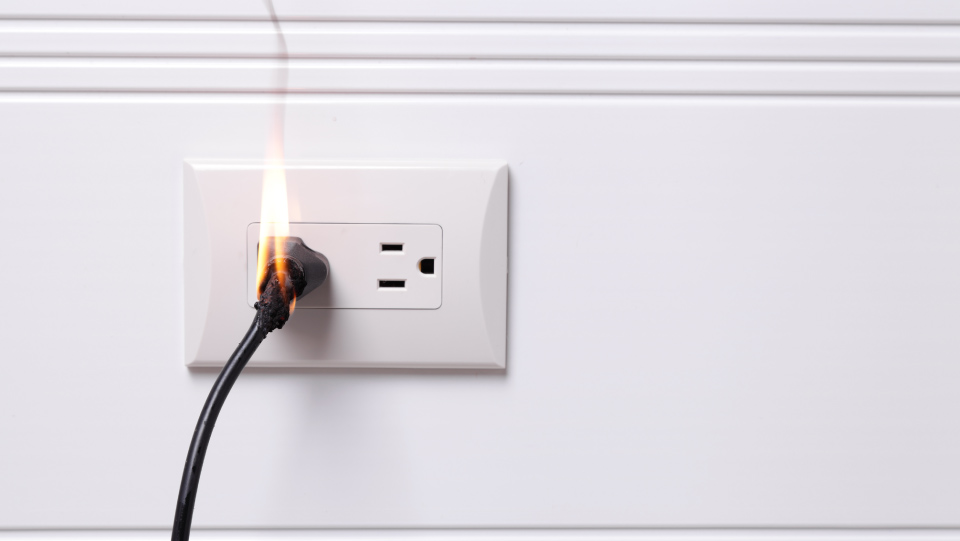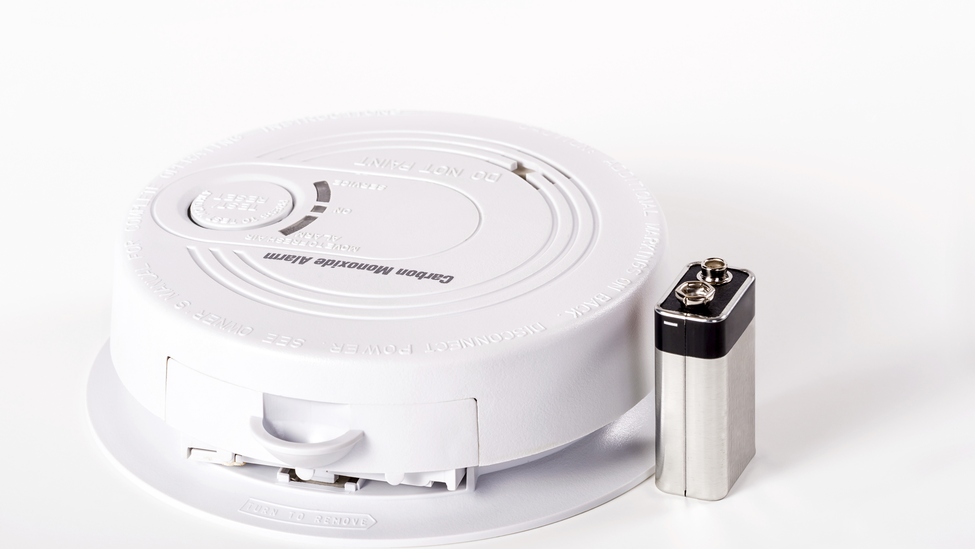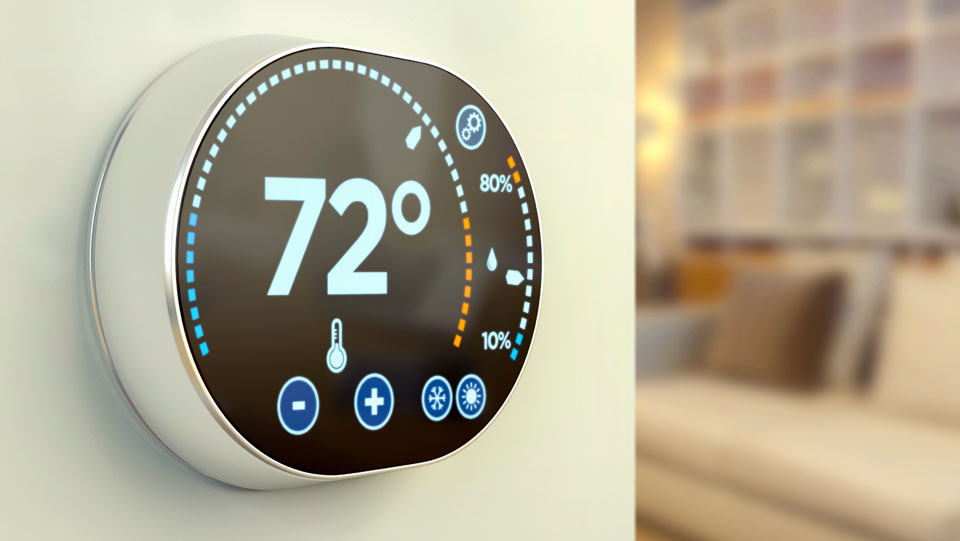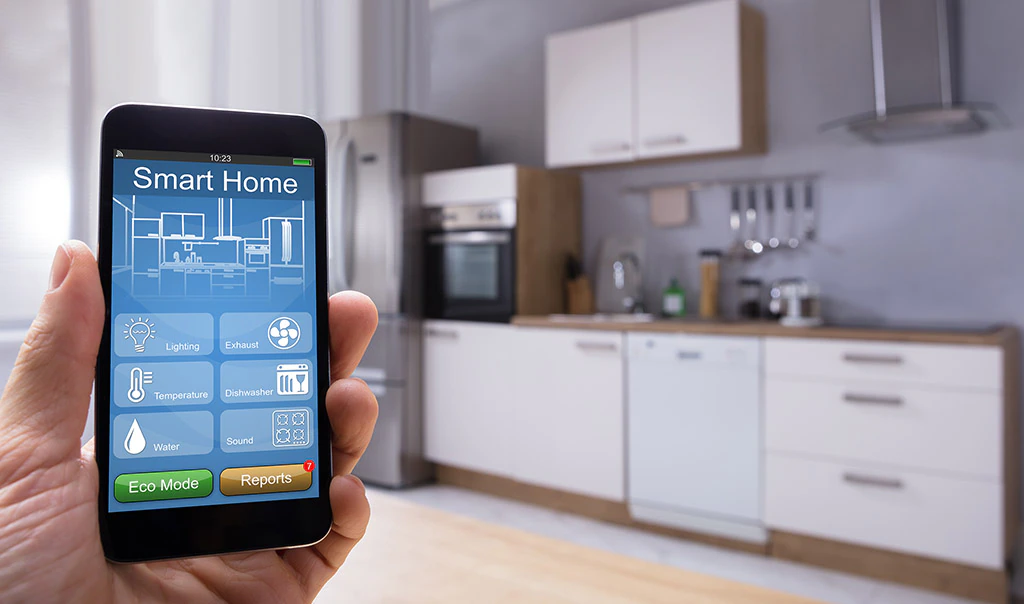The Use of Smart Home Technology in Fire Prevention and Detection

(DESCRIPTION)
A red umbrella logo, Travelers. Text, Using SMART Technology for Fire Prevention. In an animation, a pot of oil bubbles on a stove in a kitchen.
(SPEECH)
[AUDIO LOGO]
SPEAKER: Keeping your home safe from a fire begins with exercising caution to help prevent a fire from starting in the first place.
(DESCRIPTION)
The pot catches fire. A bubble pops up containing a device with buttons. A light on it blinks red.
(SPEECH)
Smart devices could help to prevent a fire in your home by taking action, for you, to help minimize risk.
(DESCRIPTION)
A gauge labeled risk turns from red to green. A woman walks into the kitchen.
(SPEECH)
Here are two smart technology devices for fire prevention you can add to your home.
(DESCRIPTION)
The Smart Stovetop Fire Prevention device reappears.
(SPEECH)
One, smart stovetop fire prevention devices.
(DESCRIPTION)
The device affixes to the wall next to the stove as the woman cooks.
(SPEECH)
These use motion-sensing technology to shut off your stove if you walk away from the kitchen while you're cooking, which, by the way, you should never do.
(DESCRIPTION)
The woman turns away from the stove and an X appears over her.
(SPEECH)
If the sensor detects that you've left the kitchen, it begins a countdown to shut off the stove.
(DESCRIPTION)
A red light on the sensor blinks. A series of outlets appear.
(SPEECH)
Two, smart plugs, also known as smart outlets.
(DESCRIPTION)
A toaster on the counter is plugged into a wall outlet.
(SPEECH)
With these devices, you can turn off power to kitchen appliances, like your toaster, using your smartphone. Some
(DESCRIPTION)
A user taps on their phone to turn the kitchen outlet off.
(SPEECH)
Models will even let you set them to automatically turn off power to your appliances when you're not using them.
(DESCRIPTION)
The user taps their mobile phone to turn off a coffee machine. The smart sensor device appears over the exterior of a home.
(SPEECH)
Whether you use smart technology or traditional methods, a few minutes of planning can help protect your home from fire. Talk to your Travelers representative or independent agent today.
[MUSIC PLAYING]
(DESCRIPTION)
A red umbrella logo, Travelers. Text, Talk to your Travelers representative or independent agent today. Travelers.com. Travelers Casualty and Surety Company of America and its property casualty affiliates. One Tower Square, Hartford, CT 06183. This material does not amend, or otherwise affect, the provisions of any insurance policy issued by Travelers. It is not a representation that coverage does or does not exist for any particular claim of loss under any such policy. Coverage depends on the facts and circumstances involved in the claim or loss, all applicable policy provisions, and any applicable law.
Traditional smoke detectors are designed to alert people inside the home of a fire so everyone can evacuate safely. But smart home fire and smoke detection devices could help detect a fire in your home and minimize serious damage by notifying you earlier. In fact, some smart fire detection and prevention technology can alert you – and the fire department – on your mobile smart device, even if you’re miles from home.
Smart smoke detectors
Smart smoke detectors can provide you with alarm notifications on your smartphone. They can also be wired into your home security system and monitored by a central station to alert you and the fire department of an alarm. When they detect the presence of smoke particles in the air, they can be arranged to shut down your air handling systems to help prevent the spread of smoke while people safely evacuate the home. Additionally, some systems are able to turn on lights and offer spoken directions about what to do in case of a fire.
You may also be able to integrate a camera with your smart smoke detectors so you can record footage of the event to understand the whereabouts of the fire’s origin. Instead of chirping a low-battery warning in the middle of the night, smart detectors can send an alert to your smartphone when the battery charge level is getting low. Some models include carbon monoxide (CO) detection capabilities.
Smart fire detectors
If you have frequent false alarms with smoke detectors, a heat detector is another way to help detect fire. There are generally two types of heat detectors (many heat detectors have both capabilities built into them):
- Simple fixed temperature detectors that alarm at a factory pre-set temperature.
- Rate-of-rise detectors that alarm when a rapid rise in temperature is detected.
Be advised that heat detectors are generally not meant to replace smoke detectors in bedrooms or other places where a fire safety device is required. Many of these smart fire detection systems can be interconnected, so if a detector goes off in one area of your property, all of the alarms will sound.
Smart batteries
As an alternative to buying a new smart smoke, heat or CO detector, consider smart batteries. They can power your existing detectors and provide you with alarm notifications on your smartphone. You can monitor more than one detector in your home and receive a notification to replace a battery before it starts to chirp.
Smart stovetop fire prevention
The leading cause of home structure fires and kitchen fires is unattended cooking.1 To help prevent cooking fires, there are devices using motion sensing technology specifically designed to automatically shut off the stove. If the sensor detects that you’ve left the kitchen, it begins a countdown to shut it off. When you return to check on the stove, it automatically restarts the countdown.
Smart plugs or outlets
Smart plugs, also known as smart outlets, can provide peace of mind if, for example, you don’t remember whether you unplugged the iron before leaving home. From an app on your smartphone, you can turn lights and small appliances on and off. Some models automatically turn off power to your appliances when they're not needed.
Take action to protect your home from fires
Smart fire detection and prevention technology for the home can help protect and save lives as well as your house. If you’re uncomfortable with, or unsure of, the installation process, don’t hesitate to reach out to a professional. Once installed, these devices may also qualify you for discounts on your homeowners insurance premiums.
To learn more, contact an independent insurance agent, get a quote or speak with a Travelers representative.



